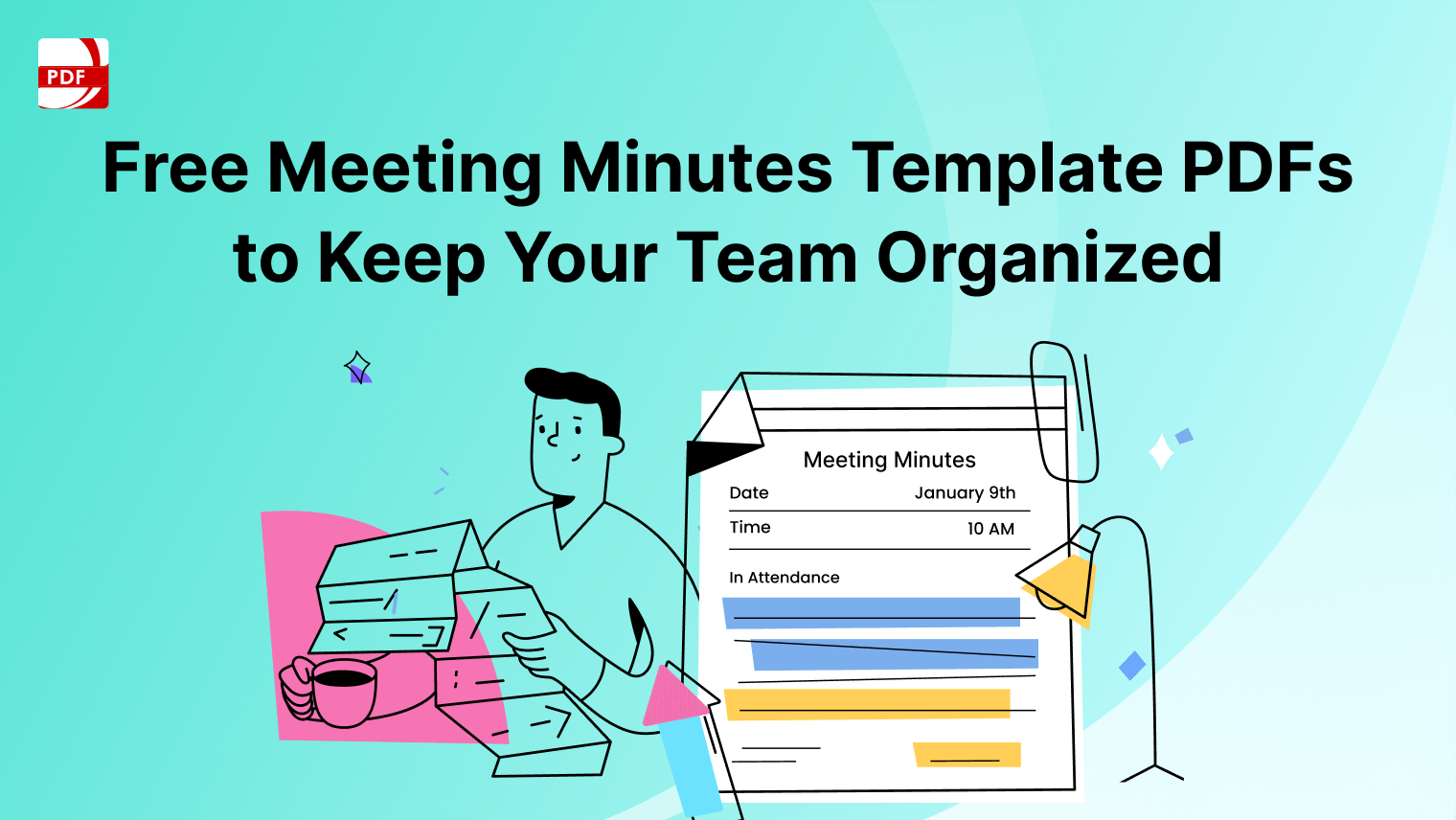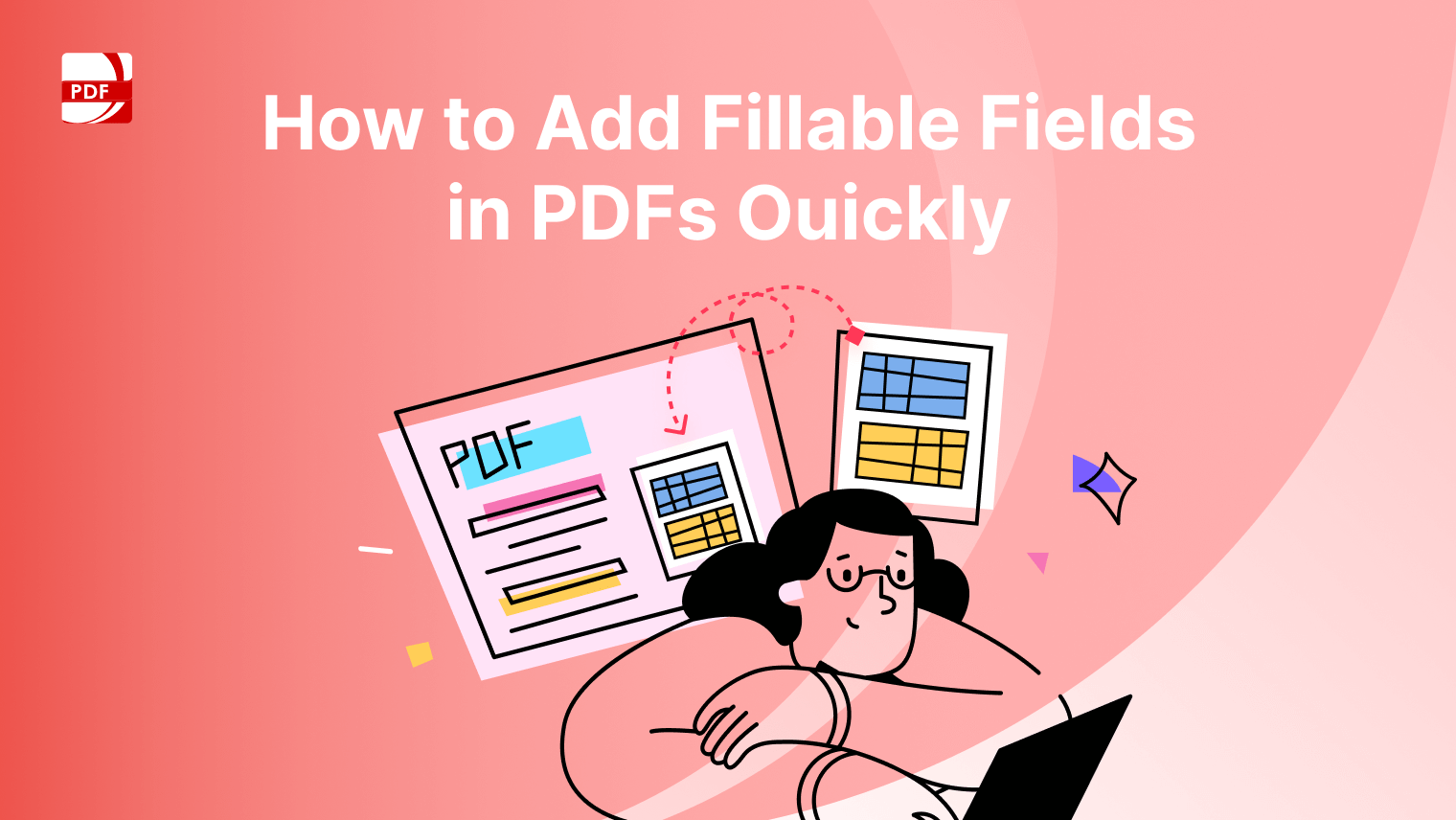Extracting tables from PDF documents is a common requirement, especially for data analysis, reporting, and data entry tasks. However, it can be a tedious process, as PDFs are primarily designed for displaying content, not for easy data extraction.
In this blog, we will explore the reasons to extract tables from PDFs, best practices for doing so, and answer some frequently asked questions to simplify the basic method.
How to Extract Tables from a PDF on Windows
Easily extract tables from PDF files using our complete guide to PDF Reader Pro's amazing features on your Windows operating system.
Step 1: Open Your Digital Document
Click "Open File" on the Home interface or drag and drop the document into PDF Reader Pro.
Image Source: PDF Reader Pro
Step 2: Choose "Converter" from Toolbar
Our conversion tool can export PDF files to a number of formats.
Image Source: PDF Reader Pro
Step 3: Click "To Excel"
This will open a window where you can opt to proceed or convert a batch of PDF files by clicking "Batch".
Image Source: PDF Reader Pro
Step 4: Select "Convert"
Click the convert button to save your file. You can now retrieve the data in an editable format.
Image Source: PDF Reader Pro
How to Extract Tables from a PDF on Mac
Export PDF tables using PDF Reader Pro's file converter on your Mac operating system.
Step 1: Open Your PDF file
Click "Open File" or drag your document into the drop zone. 
Image Source: PDF Reader Pro
Step 2: Select "Converter"
Choose the converter from the main toolbar.
Image Source: PDF Reader Pro
Step 3: Click "To Excel"
This will open a window to create an Excel file. Click "Batch" to use the batch process feature.
Image Source: PDF Reader Pro
Step 4: Click the Convert Button
This will save the file in your destination folder, allowing you to preserve table formatting.
Image Source: PDF Reader Pro
For Tables That Are Images
- Repeat Steps 1 and 2
- Choose "Extract Images"

Click Extract image to save the tables as images in a download folder.
Image Source: PDF Reader Pro
Reasons to Extract Tables from PDFs
Tables within PDFs often contain valuable data, and extracting them from essential documents can be serve various purposes:
-
Data Analysis: Analysts and researchers often need to extract tables to perform data analysis, generate statistics, or create visualizations.
-
Data Entry: When data from PDF tables needs to be entered into databases or spreadsheets, extraction can save time and reduce the risk of errors.
-
Reporting: For business reports, academic papers, or government publications, extracting tables allows for the inclusion of precise, well-structured data.
-
Comparison: Extracted tables enable easy comparisons between different datasets, versions, or reports.
-
Archiving: To preserve historical or important data from PDFs for future reference or compliance.

You can also check our article resource for more information on How to Export Figma to PDF.
Best Practice for Extracting Tables from a PDF
Here is a comprehensive guide on the best practices for conducting the conversion process on PDFs using our editing tools:
-
Choose the Right Tool: Select a PDF extraction tool that suits your needs. Some options include Adobe Acrobat, Tabula, Adobe Illustrator, PDFtoExcel, and online converters like Smallpdf or ILovePDF.
-
Verify the PDF Quality: High-quality, text-based PDFs are easier to work with. If the PDF contains scanned images or non-selectable text, consider running advanced PDF features like OCR (Optical Character Recognition) to convert it into selectable text.
-
Open the PDF: Use your chosen tool to open the PDF document containing the table you want to extract.
-
Select the Table: In the tool, use the selection feature to choose the table. Ensure that the selected area covers the entire table, including headers and footers.
-
Extract the Table: Most tools provide additional features to extract the selected table. This may involve saving it as a separate file or copying it to your clipboard.
-
Cleanup and Formatting: Once extracted, clean up the data. Remove any unwanted characters, formatting, or extra rows or columns. Ensure the data is well-structured.
-
Export the Table: Depending on your needs, you can export the table as an Excel spreadsheet, CSV file, or another format compatible with your analysis or data entry software.
-
Review and Validate: Before using the extracted data, review it to ensure accuracy and consistency. Check for any missing or erroneous entries in the new type of document.
-
Save and Backup: Save the extracted table, and consider keeping a backup of the original PDF for reference of the table structures.
FAQs About Extracting Tables from a PDF
Have questions on how to use the array of features PDF Reader Pro offers? Let's address some common questions about extracting tables from PDFs below:
Can I extract tables from any type of PDF?
In most cases, you can extract tables from text-based PDFs. Extracting tables from scanned PDFs or image-only PDFs may require OCR (Optical Character Recognition) to convert the content into selectable text.
What is the best tool for extracting tables from PDFs?
The choice of a tool depends on your specific needs. Adobe Acrobat, Tabula, and online converters like Smallpdf are popular options. Your choice should consider the complexity of the tables, your budget, and preferred features.
How accurate is table extraction from PDFs?
The accuracy of extraction depends on the quality of the PDF and the extraction tool used. Accurate text-based PDFs and quality extraction tools typically yield highly accurate results.
Are there free tools for extracting tables from PDFs?
Yes, there are free online tools available for extracting tables. Keep in mind that some free tools may have limitations in terms of functionality or the number of pages you can process.
Can I extract multiple tables from a single PDF document?
Yes, you can extract multiple tables from a single PDF document. Most extraction tools allow you to select and extract multiple tables from the same PDF.
How do I handle tables with complex formatting or merged cells during extraction?
Tables with complex formatting, merged cells, or nested tables can be challenging to extract accurately. In such cases, you may need to manually clean up and reformat the extracted data, or consider more advanced PDF extraction tools that can handle complex structures.
Can I extract tables from password-protected PDFs?
It depends on the extraction tool. Some tools may require you to enter the password to unlock the PDF before extraction. Ensure you have the necessary permissions to access the protected PDF.
What formats can I export the extracted tables to?
Most extraction tools allow you to export tables to formats like Excel spreadsheets (XLS or XLSX), CSV (Comma-Separated Values) files, or plain text. Choose the format that best suits your needs for data analysis or data entry.
How do I ensure the extracted table retains its structure and formatting?
To preserve the structure and formatting of the extracted table, you may need to choose a tool that offers advanced formatting options. This can be particularly important when working with tables that have specific formatting requirements.
Can I extract tables from password-protected PDFs?
Depending on the extraction tool, you may be able to extract tables from password-protected PDFs. Some tools require you to enter the password for access during the extraction process. Ensure you have the necessary permissions to access the protected PDF.
By following these best practices and considering the FAQs, you can efficiently extract tables from PDFs, making the process smoother and more accurate for various data-related tasks.









 Free Download
Free Download  Free Download
Free Download 





 Support Chat
Support Chat